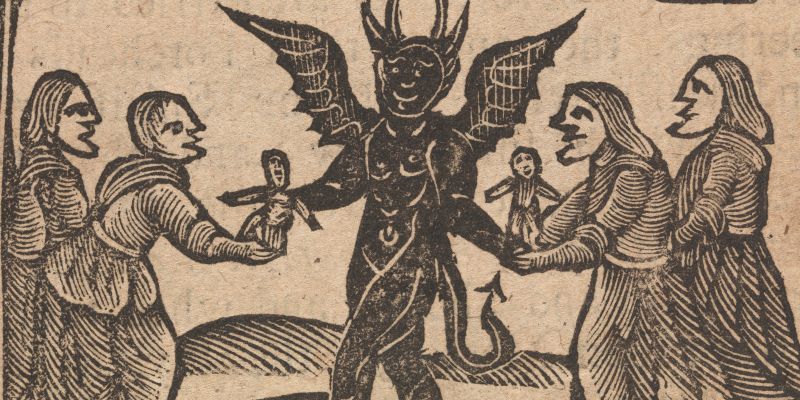The Malleus Maleficarum

The Malleus Maleficarum, The Essential Handbook for Witch Hunters
by Charles Spratley
The Malleus Maleficarum, the name itself sounds ominous, and just hearing the words spoken make some shudder. Latin for the “Hammer of Witches”, this tome has been viewed by many as the book to go to if you were interested in how the medieval mind thought about the idea of witchcraft and how to deal with those accused of the crime of committing it.
Published in 1487 by Heinrich Kramer and Jacob Sprenger, two Dominican priests and were both sanctioned by the Church as Inquisitors. Now, I’m going to stop on this very quickly. Whenever we hear of the Inquisition, we think burning at the stake, and you are only partially right. The Inquisition, or properly known as the Holy Inquisition was set up originally to investigate and prosecute dissentions in the faith themselves. Please keep in mind that this is when the only Christian faith was Catholic, and so anything that seemed unusual was then looked into by the Inquisition. They were known for their investigations into witchcraft, necromancy, etc. but they covered everything which at the time was considered heresy. What is interesting to me about it’s authorship, is that Spenger’s name wasn’t added to the title until 1519. So back to the Malleus, it’s primary function was to challenge all arguments about the existence of witchcraft and to be a handbook for magistrates on how to identify, and interrogate witches.
In 1487, they presented the Malleus Maleficarum to the University of Cologne’s Faculty on Theology to get the book’s endorsement. This leads to an interesting debate not just between Church historians and purveyors of the occult, but also bibliophiles. Was it accepted by the Catholic Church and issued a Letter of Approbation as was published in the front of it since it’s first printings, or was the document possibly forged by Kramer himself. Some speculate that the Approbation is a fraud, but if this was true, would Kramer have been able to continue successfully in the Church for many years afterwards?
There is also a general consensus that the book was placed on the Index Liborium Prohibitorum,or list of forbidden books, but that list wasn’t started till 1559 and so the thought that the Church would place a book that was in circulation for nearly 80 years would then be banned is unlikely.
It doesn’t even truly matter if the book was ever banned by the Church, it became the essential handbook for Witch Hunters and Inquisitors throughout the Late Medieval Period and from 1487 and 1520 it was published thirteen times and then had a resurgence in the 1570s through the mid 1660s in which it was published again sixteen times. The popularity of the book has only bolstered by the use of the Gutenburg press which was manufactured in the mid 1450s. The Malleus is divided into three very distinct sections. It instructed magistrates on how to identify those who may be involved in witchcraft as well as how to interrogate and get a confession from them and of course how to deal with them after a confession, usually death.
I remember when I did a lecture last year on the Salem’s Witch Trial, which was our best received lecture and was sold out, the Malleus was brought up. Was this famous tome used in the persecution the men and women who either lost their lives or were imprisoned. Not openly, but the trials themselves were presided over people who had extensive libraries and it wouldn’t surprise me if one of the magistrates owned a copy. I’m fairly sure Cotton Mather, who commented on the trials, had a copy.
If you are a history lover and interested in the looking how the Church looked at the Occult, I strongly recommend getting a copy of this (in)famous book.
- Posted in:
- The Paranormal Library
